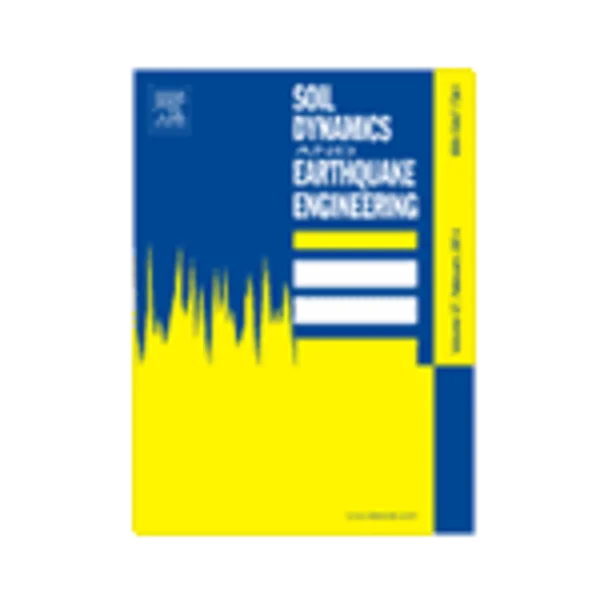-
damping coefficients for near-fault ground motion response spectra
جزئیات بیشتر مقاله- تاریخ ارائه: 1392/07/24
- تاریخ انتشار در تی پی بین: 1392/07/24
- تعداد بازدید: 846
- تعداد پرسش و پاسخ ها: 0
- شماره تماس دبیرخانه رویداد: -
damping coefficients are frequently used in earthquake engineering as a simple way to adjust the pseudo-acceleration or displacement response spectra associated with a viscous damping ratio of 5% to the higher values of viscous damping needed for design of structures equipped with base isolation and/or supplemental energy dissipation devices. in this study, damping coefficients for the single-degree-of-freedom system subjected to near-fault ground motions are calculated for a large range of periods and damping levels. the results indicate that damping coefficients proposed in design codes and previous studies, based primarily on far-field ground motion records, tend to not be conservative for near-fault seismic excitations. a new approach is recommended for the derivation of damping coefficients appropriate for engineering analysis and design in the immediate vicinity of the earthquake fault. this includes the normalization of the period axis with respect to the duration of the ground velocity pulses recorded in the near-fault region. the pulse duration is controlled by the rise time on the fault plane and scales directly with earthquake magnitude.
مقالات جدیدترین رویدادها
-
استفاده از تحلیل اهمیت-عملکرد در ارائه الگوی مدیریت خلاقیت سازمانی و ارائه راهکار جهت بهبود
-
بررسی تاثیر ارزش وجوه نقد مازاد بر ساختار سرمایه شرکت های پذیرفته شده در بورس اوراق بهادار تهران
-
بررسی تأثیر سطح افشای ریسک بر قرارداد بدهی شرکت های پذیرفته شده در بورس اوراق بهادار تهران
-
بررسی تأثیر رتبه بندی اعتباری مبتنی بر مدل امتیاز بازار نوظهور بر نقد شوندگی سهام با تأکید بر خصوصی سازی شرکت ها
-
تأثیر آمیخته بازاریابی پوشاک ایرانی بر تصویر ذهنی مشتری پوشاک ایرانی (هاکوپیان)
-
ارزیابی پتانسیل روانگرایی در خاکهای رسی مطالعه موردی: سایت اجرایی ایستگاه پمپاژ جزیره مینو
-
طراحی تفرجگاه ساحلی شهرستان محمودآباد در جهت بهبود تصویر ذهنی مقصد با رویکردی بر ارتقای جذب گردشگر
-
modeling thermal conductivity augmentation of nanofluids using diffusion neural networks
-
improvement of dry float–sink separation of smaller sized spheres by reducing the fluidized bed height
-
ranking the chemical firms listed in tehran stock exchange by topsis method
مقالات جدیدترین ژورنال ها
-
مدیریت و بررسی افسردگی دانش آموزان دختر مقطع متوسطه دوم در دروان کرونا در شهرستان دزفول
-
مدیریت و بررسی خرد سیاسی در اندیشه ی فردوسی در ادب ایران
-
واکاوی و مدیریت توصیفی قلمدان(جاکلیدی)ضریح در موزه آستان قدس رضوی
-
بررسی تاثیر خلاقیت، دانش و انگیزه کارکنان بر پیشنهادات نوآورانه کارکنان ( مورد مطالعه: هتل های 3 و 4 ستاره استان کرمان)
-
بررسی تاثیر کیفیت سیستم های اطلاعاتی بر تصمیم گیری موفق در شرکتهای تولیدی استان اصفهان (مورد مطالعه: مدیران شرکتهای تولیدی استان اصفهان)
-
مروری بر اثر فاکتورها و روش های خشک کردن گیاهان دارویی در فرآیند های پس از برداشت، روی کمیت و کیفیت گیاهان دارویی
-
تاثیر ارزش ویژه برند برموفقیت شرکتهای پیمانکار درمناقصات (مورد مطالعه: شرکت پیمانکاری جهاد نصر زنجان)
-
بررسی تاثیر قیمت نفت و نوسانات آن بر بازده دارایی شرکت ها پذیرفته شده در صنعت شیمیایی و پالایشی بورس اوراق بهادار تهران
-
مواجهه در غیاب ؛ اصول اساسی دیالوگ میان نظریه های ادبی نامتجانس
-
جایگاه دانش سیاسی و مدیریت در علوم حکمرانی




سوال خود را در مورد این مقاله مطرح نمایید :